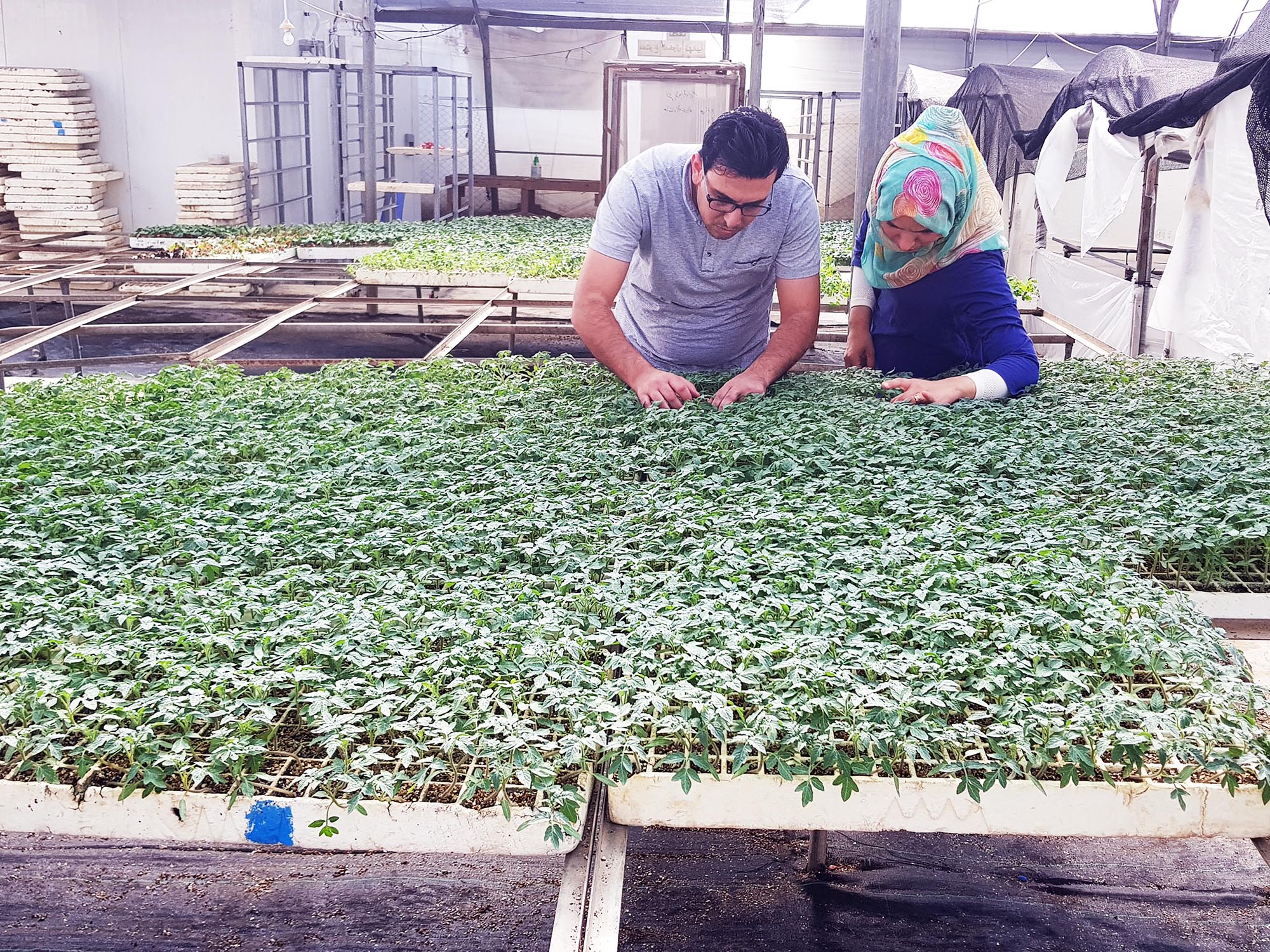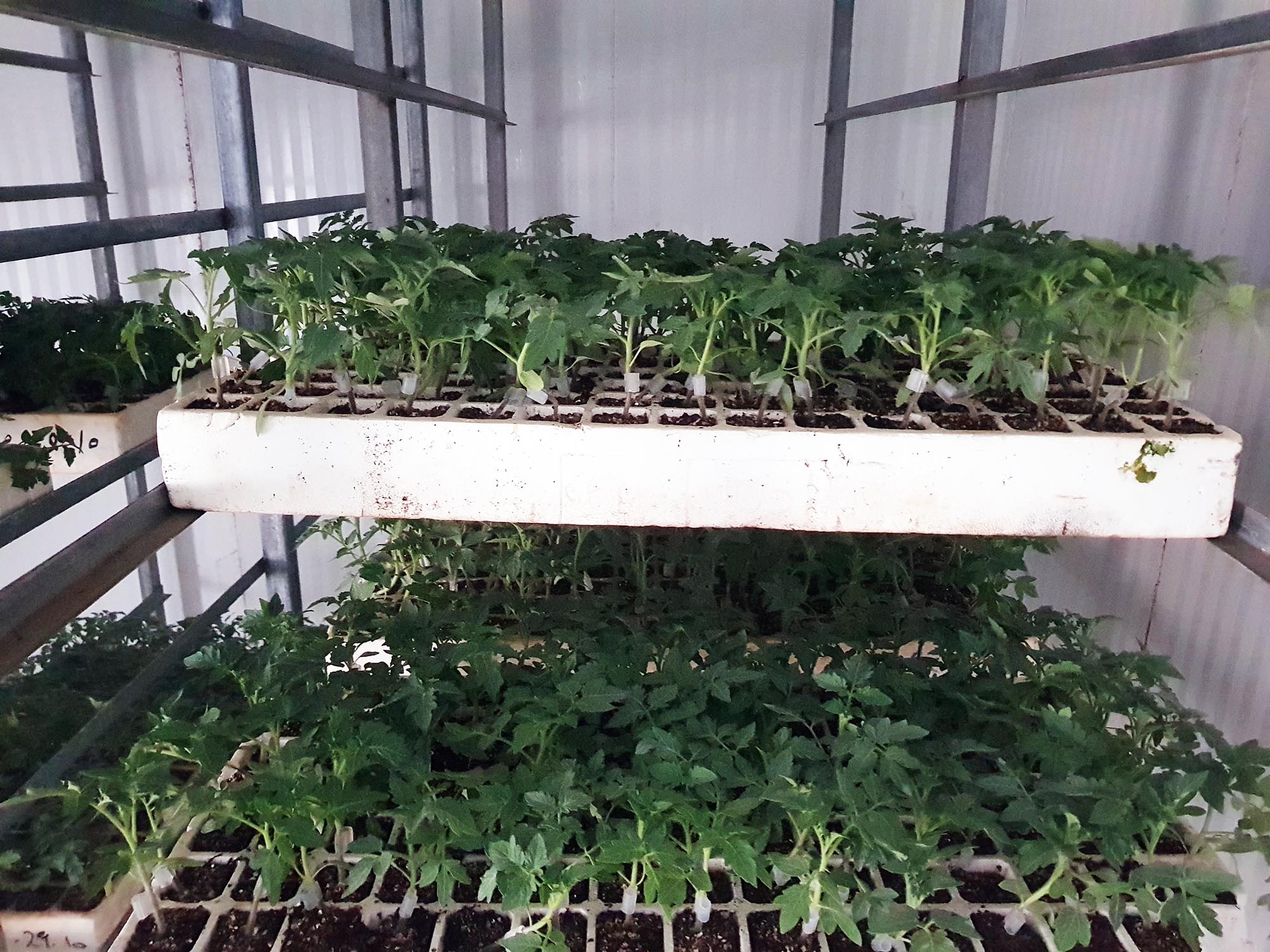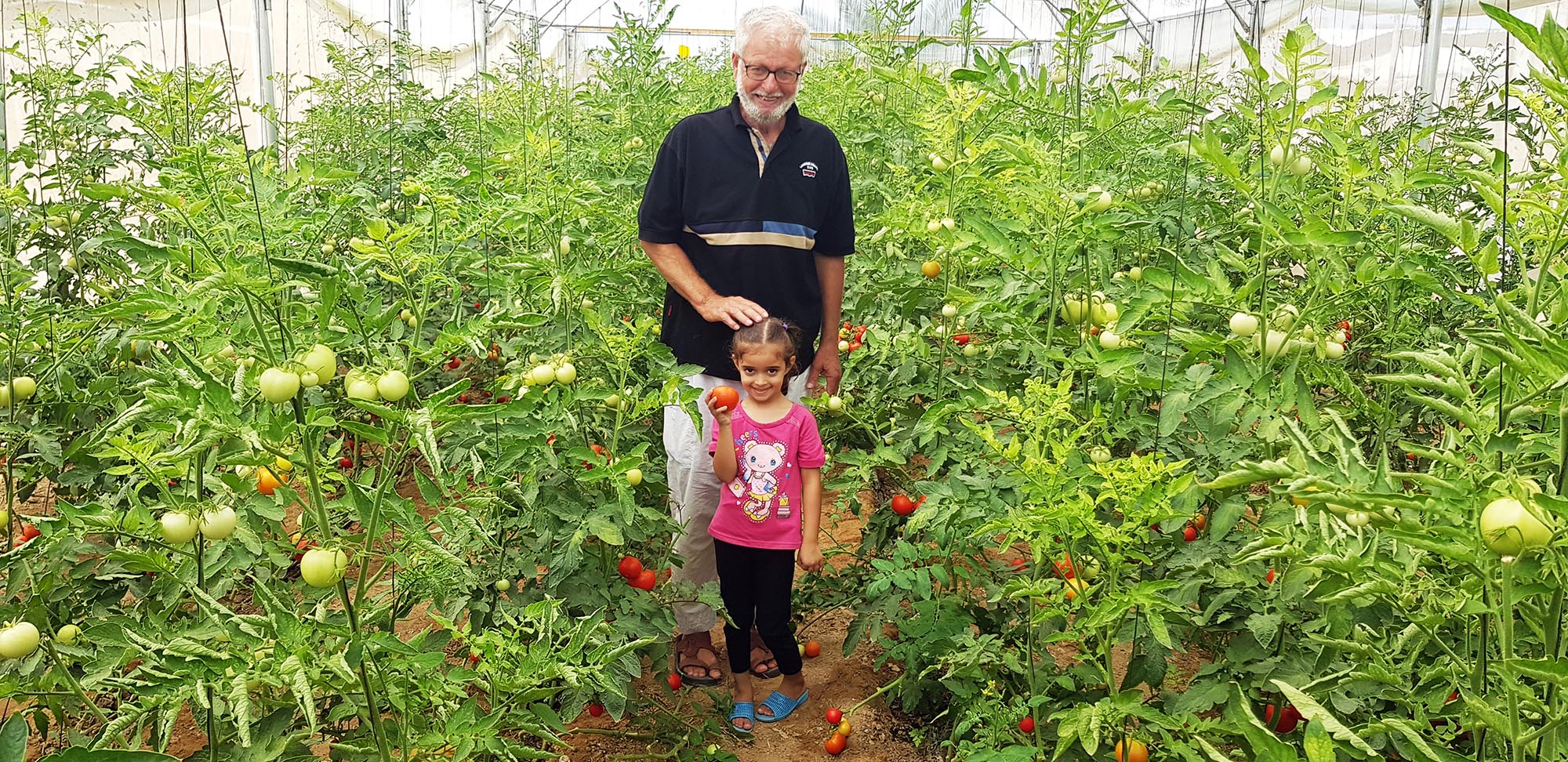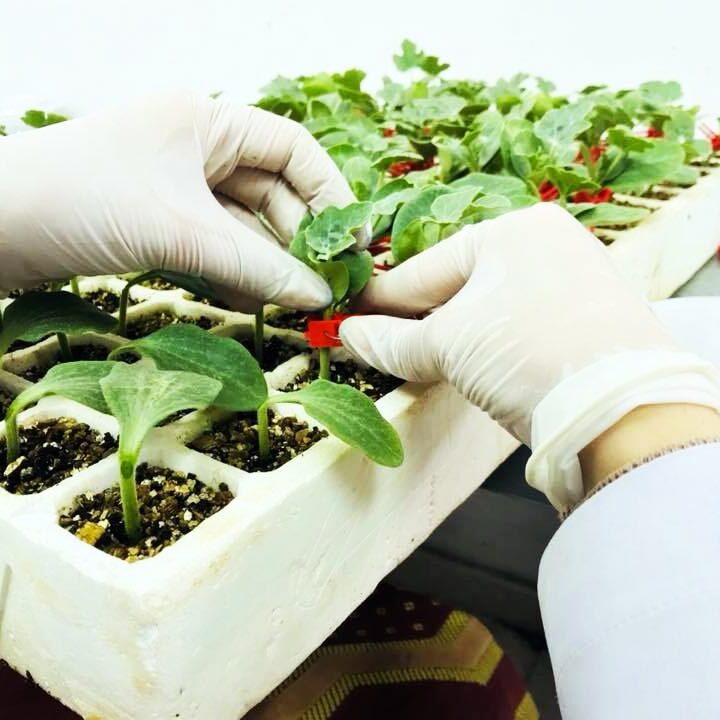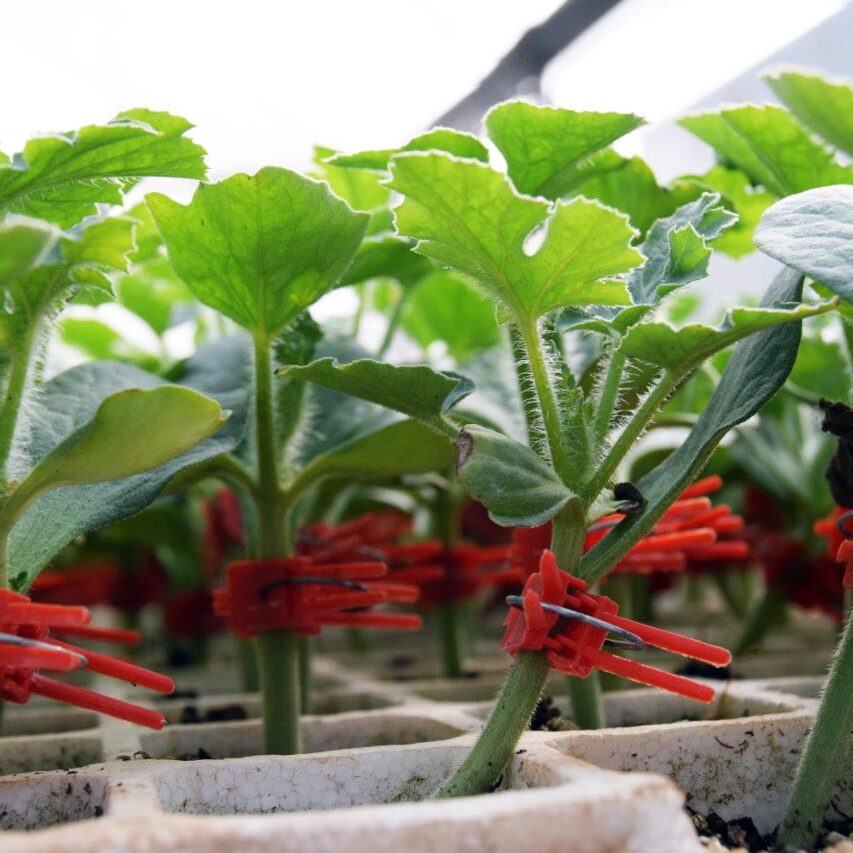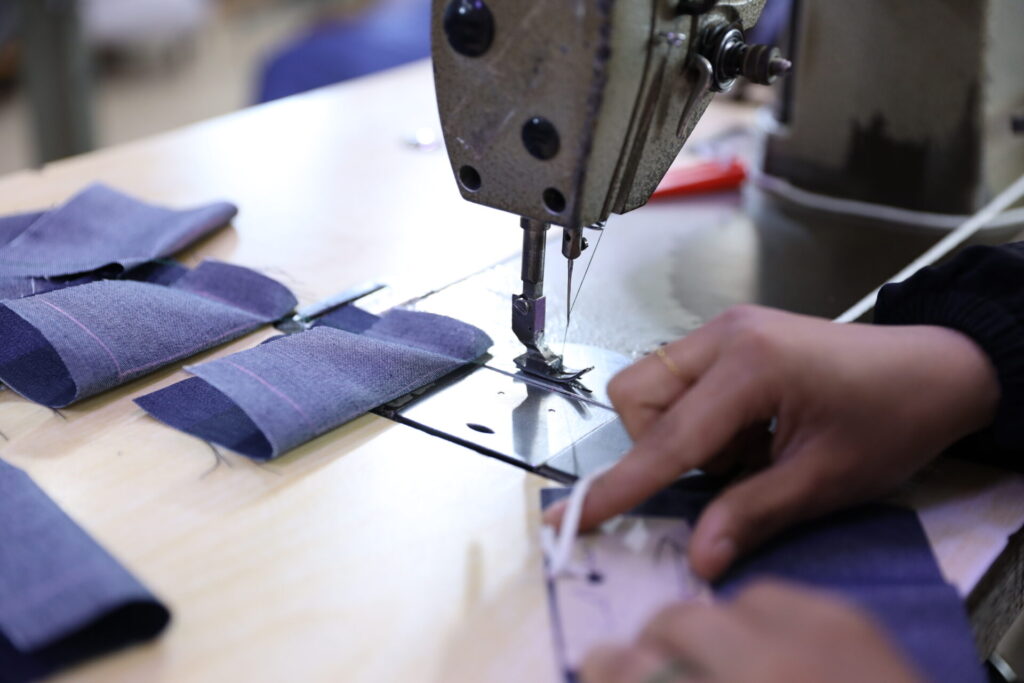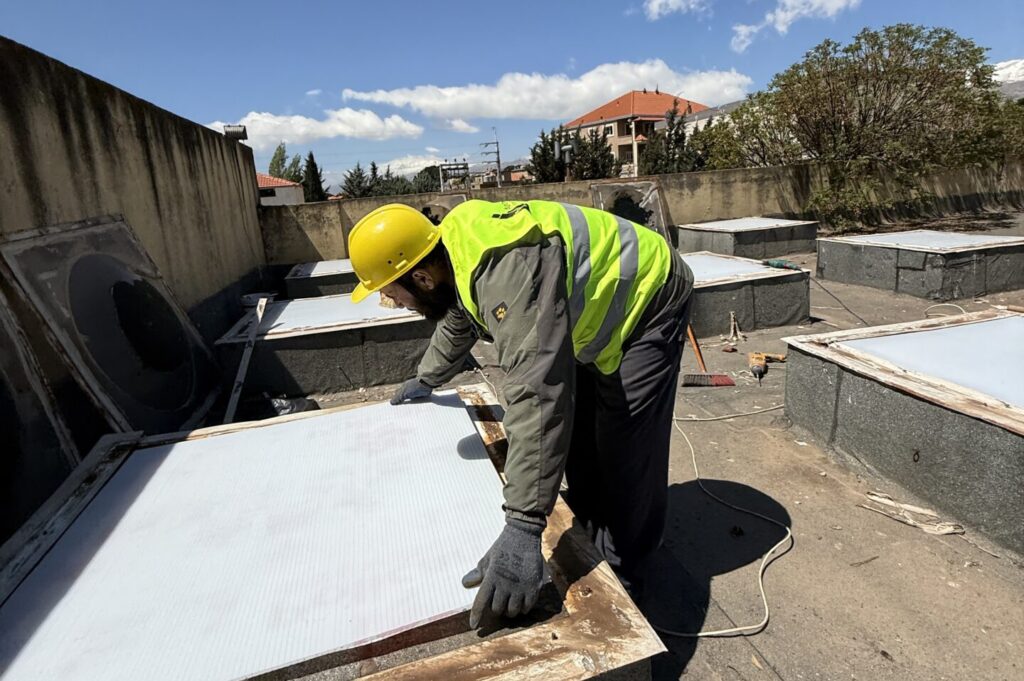Nov, 2018
The technique of grafting is environmentally friendly, requiring less fertilizer and pesticide use. Grafting is pivotal for farmers in Gaza since it provides an alternative to unsafe methods of cleansing the soil.
Ibrahim Al Najaar, an agronomist based in Gaza, oversees the construction of Anera greenhouses. His many years of experience and knowledge makes him eager to promote a new horticultural technique in Gaza known as grafting. Grafting has existed for as long as people have been farming, but in Gaza it is rarely used as an agricultural method.
"Farmers in Gaza were introduced to grafting in 2010," according to Ibrahim. "However, several barriers prevented the technique from taking off here. For one, seedlings were expensive. Also, much of the culture around farming in Gaza had moved more toward industrialized farming practices such as using fertilizers and pesticides. It was only when private nurseries adopted the practice as a way of producing more disease resistant crops and flowers that it began to develop in Gaza."
Plant grafting – joining parts from two or more plants so that they grow together – has a long history. The use of modern grafting techniques on vegetable crops became common after watermelon plants were grafted onto squash rootstock in the 1920s to successfully combat soil borne diseases. Since then the technique has spread all over the world.
In grafting, the upper part (known as the scion) of one plant grows on the root system (or rootstock) of another plant. Grafting onto specific rootstocks generally provides resistance to soil borne diseases and nematodes and increases yield. Grafting is an effective technology for use in combination with sustainable crop production practices.
Gaza Farmers Can Double Their Yield Using Grafting
The technique of grafting is environmentally friendly, requiring less fertilizer and pesticide use. This is pivotal for farmers in Gaza since it provides an alternative to unsafe methods of cleansing the soil. Conventional methods kill both harmful and beneficial bacteria in the soil and use excessive amounts of fertilizer. Grafting is a much better method to resist soil diseases.
The high salinity of water in Gaza also affects produce farming. Some crops, like cucumbers, can’t be grown in the soil without irrigation. Grafting allows farmers to conserve water and get higher yields.
Gaza Greenhouses
Tomatoes are the favorite crop among greenhouse growers because the grafted tomato plants have a high yield. Awad is one such farmer. He says the economy is shrinking so one cannot expect to sell produce at decent prices at the local market. The family has depended on public assistance since Awad lost his agricultural job. Awad inherited a patch of land from his father, on which he once grew eggplants, beans and tomatoes. However, fungal infections destroyed his crops.
Awad is thrilled that the 400 grafted seedlings provided by Anera are currently displaying ripening tomatoes. His greenhouse produces 2 ½ tons of tomatoes annually – enough for the family to both consume what they can themselves and sell the rest at the local market.
“I am so excited to see grafting technology thrive in Gaza. It will allow us to reduce the use of fertilizers and increase the availability of safe food. Increasing productivity using grafting will be a major achievement for our community.”
- Awad, greenhouse tomato farmer
At the time of writing, Anera donors have provided grafted seedlings to 36 farming families. Each farmer receives 400 grafted seedlings. In addition, Anera is building 30 greenhouses in the Deir Al Balah, Wadi as Salqa and Az Zawayda communities.

